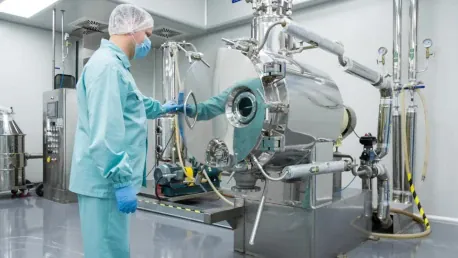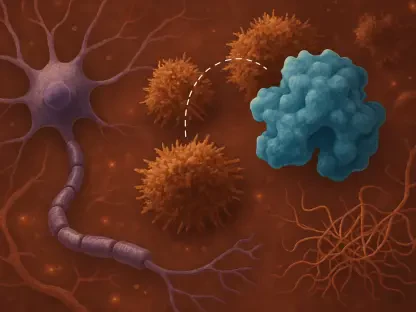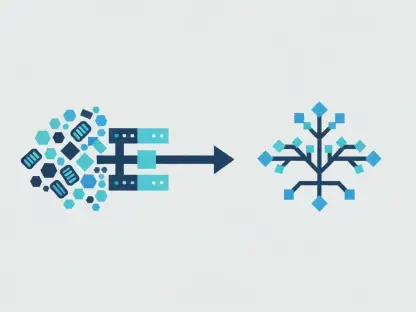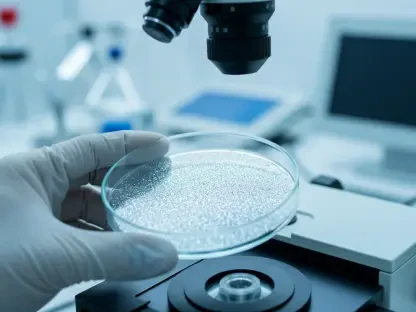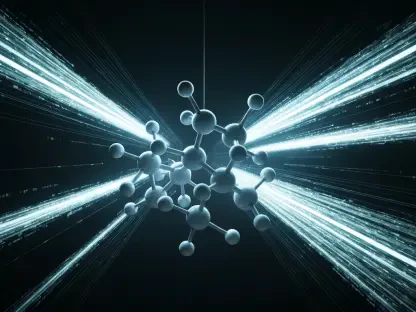The biopharmaceutical industry has witnessed significant advancements in upstream bioprocessing over the years, but downstream bioprocessing (DSP) often lagged, creating bottlenecks that hampered overall efficiency. Recent innovations, however, are transforming the DSP landscape, offering promising solutions to these persistent challenges. This article explores the evolution of downstream biomanufacturing, examining how technological advancements are finally tipping the scales in favor of more efficient and reliable production processes.
Historical Challenges in Downstream Bioprocessing
Persistent Bottlenecks in DSP
For years, downstream bioprocessing has been the Achilles’ heel of biomanufacturing. As upstream bioreactor productivity soared, the downstream purification and separation steps struggled to keep up. These bottlenecks were not just minor hiccups but significant blocks that slowed production timelines and increased costs. The disparity between upstream and downstream capabilities often meant that cutting-edge upstream advancements resulted in underutilized potential, with downstream processes unable to efficiently handle the increased throughput.
It’s important to understand the scale of the issue. While upstream processes have seen substantial improvements in productivity, the downstream side faced a variety of stumbling blocks. Filtration technology and chromatography techniques, for instance, did not evolve at the same pace, causing delays and inefficiencies. This section explores the intrinsic challenges that contributed to these perennial bottlenecks, such as capacity constraints, technological limitations, and complex purification requirements.
Disparity Between Upstream Advances and DSP
The biopharmaceutical sector’s challenge with downstream processes began with the widening gap between upstream advancements and DSP capabilities. Upstream innovations, particularly around bioreactors, have seen exponential productivity gains, whereas downstream processes like filtration and chromatography were riddled with ineffectiveness. The failure of downstream technology to evolve at a comparable pace meant that any incremental upstream yield became redundant without efficient ways to purify and separate biomolecules. This disparity was further exacerbated by technological limitations and stringent purity requirements that DSP equipment struggled to meet.
In addition to technology gaps, the downstream processing faced other logistical and technical hurdles. Capacity constraints often led to delays as existing DSP infrastructure was pushed beyond its limits. The complexity of different purification requirements also posed a challenge, making it difficult to streamline processes that could cater to a range of bioproducts. All these factors combined contributed to a consistently problematic scenario that has only recently shown signs of genuine improvement, thanks to a series of technological breakthroughs aimed at addressing these long-standing inefficiencies.
Shift in DSP Capacity and Efficiency
Innovations Driving Change
The tide is finally turning in the realm of DSP. Recent innovations, including continuous bioprocessing and single-use technologies, have substantially improved downstream operations. Continuous bioprocessing offers a seamless alternative to traditional batch processing, reducing downtime and increasing overall throughput. Simultaneously, single-use systems are simplifying setup, reducing contamination risks, and improving scalability. These advancements mark a significant leap forward, suggesting that DSP bottlenecks may soon be a thing of the past.
Continuous bioprocessing represents a revolutionary approach, enabling uninterrupted production flows that significantly cut down on transition times. Furthermore, innovations in single-use technologies offer remarkable versatility, allowing facilities to employ disposable bioreactors and filtration units that eliminate the need for extensive cleaning and cross-contamination prevention measures. As a combined force, these technological advancements are proving transformative for downstream biomanufacturing, setting new benchmarks for efficiency and productivity. The revolutionary potential of these innovations cannot be understated, with early adopters already reporting significant improvements in their operational metrics.
Decreased Bottlenecks in Manufacturing and CMOs
Both biomanufacturers and contract manufacturing organizations (CMOs) report a noticeable decrease in severe and moderate DSP bottlenecks. Recent surveys indicate that only 38% of facilities are encountering minor DSP issues. This historic improvement is a testament to the efficacy of new technologies and strategic process optimizations. CMOs, in particular, who faced unique challenges due to multi-client demands and varied purification strategies, have seen significant relief. This section discusses the numbers and trends, providing a clear picture of the current DSP landscape.
The newfound efficiency is largely attributed to technological integrations and better strategic planning. CMOs, which have a more complex operational landscape due to multiple client requirements, have notably benefitted from these advancements. For years, the contract manufacturing segment struggled with DSP, particularly during the COVID-19 pandemic when global supply chains were severely disrupted. Overcoming these hurdles has positioned CMOs to operate with newfound efficiency, navigating their multi-client environments more effectively. As we move forward, it’s clear that these technological interventions are not a temporary fix but rather a new standard for DSP operations, offering sustainable improvements that mark the beginning of a new era for biomanufacturing.
Balancing Upstream and Downstream Performance
The Role of Protein A Chromatography in mAbs
Protein A chromatography is indispensable for downstream processing of monoclonal antibodies (mAbs). However, it can become a bottleneck if not properly balanced with upstream titers. This section delves into how the industry is maintaining this balance, ensuring that downstream capabilities align with upstream productivity. It explores technological adjustments and strategic planning that help navigate these complex interdependencies, ensuring that neither upstream nor downstream processes become a rate-limiting step.
The performance of Protein A chromatography has significant implications for overall DSP efficiency, given its pivotal role in mAb purification. If upstream titers vastly outpace downstream capacities, the result is an imbalance that generates bottlenecks, reducing overall throughput. Industry players are now focusing on synchronization to ensure both stages of bioprocessing are equally balanced. Employing scalable and flexible chromatography systems that can be adjusted to align with variable upstream outputs is one practical approach. This has been particularly critical in understanding and managing the flow of mAbs through DSP, ensuring that downstream processes can adequately meet or exceed the pace set by upstream bioreactors.
Stabilized Upstream Titers and DSP Capacity
In 2024, the average bioreactor titer for mAbs stabilized at 4.0 g/L, with DSP capacity comfortably accommodating up to 5.3 g/L. This stabilization suggests a harmonious balance between upstream and downstream processes, facilitating smoother manufacturing runs. Furthermore, the overcapacity in DSP, currently at 132% of required capacity, points towards a more robust system, capable of handling unexpected surges in production demands. This section discusses how such balanced scaling contributes to overall efficiency and reliability.
Achieving and maintaining balanced titers has paved the way for more resilient and adaptable biomanufacturing workflows. Stabilized titers ensure that DSP systems are neither overwhelmed nor underutilized, striking an optimal balance that enhances the economic viability of production processes. Overcapacity figures indicate that DSP workflows are now robust enough to accommodate spikes in demand, enabling facilities to manage seasonal surges or unexpected increases in production without compromising quality or efficiency. This newfound equilibrium between upstream and downstream systems is perhaps one of the most compelling indicators that DSP is no longer the bottleneck it once was. Facilities are now better equipped to integrate these two critical phases of biomanufacturing, creating a synergistic environment conducive to high-efficiency production.
Innovative Strategies to Combat DSP Challenges
Continuous Bioprocessing and Its Impact
Continuous bioprocessing represents a paradigm shift in downstream processing. By moving away from batch-based systems to continuous operations, the biopharmaceutical industry can achieve higher efficiencies and reduced downtimes. This approach allows for ongoing processing, significantly reducing the need for intermediate hold steps and increasing throughput. The section explores case studies and initial results from early adopters, offering insights into the practical benefits and challenges of implementing continuous bioprocessing in real-world scenarios.
Preliminary results from early adopters have shown promise, with continuous bioprocessing demonstrating substantial improvements in both yield and cycle times. The shift to continuous operations minimizes downtime, allowing facilities to maintain a constant state of production. This seamless workflow reduces the need for intermediate holds—a common source of delays in traditional batch processing. Not only does this approach boost throughput, but it also streamlines steps that traditionally required extensive cleaning and validation, thereby reducing both the time and resources needed for maintenance. Continuous bioprocessing also helps in achieving higher product consistency and quality, which are crucial in the highly regulated biopharmaceutical industry.
Adoption of Single-Use Technologies
Single-use technologies (SUT) have revolutionized the way downstream processes are conducted. Disposable bioreactors, filtration units, and other single-use systems minimize the risk of cross-contamination and reduce the time required for cleaning and validation. These technologies offer unparalleled flexibility, making it easier to switch between different products and scales. Here, we walk through the types of SUT being adopted, their benefits, and the challenges that facilities might face during the transition from traditional reusable systems.
The adoption of SUT offers facilities the flexibility to adapt to various production scales and quick product changeovers, significantly enhancing operational agility. Traditional bioprocessing systems required extensive cleaning and validation to prevent cross-contamination—an intensive protocol both in terms of time and labor. In contrast, single-use systems eliminate these requirements, allowing for faster transitions between production cycles. This flexibility is particularly beneficial for CMOs who handle multiple clients and products, enabling them to respond dynamically to varied production demands. However, the transition to SUT is not without its challenges. Facilities must navigate initial costs and logistical hurdles related to supply chain stability and waste management. Successful case studies, though, show that the long-term benefits outweigh these obstacles, cementing SUT’s role as a game-changer in DSP.
Advanced Filtration and Buffer Automation
Innovations in Filtration Technologies
Filtration technologies are at the forefront of addressing DSP bottlenecks. Advances in ultrafiltration and diafiltration have resulted in faster processing times and higher yield efficiencies. New systems and materials developed for filtration are designed to more effectively separate biomolecules, enabling quicker and more reliable purification processes. These advances address one of the most tenacious challenges in DSP, as filtration steps are often critical points where bottlenecks occur due to their role in removing impurities and concentrating products.
For example, newer ultrafiltration methods employ high-performance membranes that offer greater selectivity and throughput, thereby reducing the cycle time required for processing large volumes of bioproducts. Diafiltration techniques, which are used to desalinate and exchange buffers, have similarly seen technological improvements, yielding higher purity levels in shorter times. These innovations are particularly significant for processes involving monoclonal antibodies and other complex proteins, where maintaining product integrity while removing contaminants is essential. As technologies continue to evolve, the gap between upstream capabilities and downstream requirements is narrowing, leading to more synchronized and efficient biomanufacturing workflows.
Buffer Preparation Automation
The biopharmaceutical industry has seen remarkable growth in upstream bioprocessing over the years, focusing on developing cultures and cell growth. However, downstream bioprocessing (DSP), which involves purification and refinement of these products, has often fallen behind. This lag creates bottlenecks that reduce overall efficiency. Despite such challenges, recent technological innovations are reshaping the landscape of DSP, bringing much-needed solutions to these long-standing issues.
This article delves into the evolution of downstream biomanufacturing, examining how modern advancements are finally balancing the bioprocessing equation. Sophisticated technologies in DSP are enhancing methods for purification, increasing yield, and reducing production times. Notable advancements include improved chromatography techniques, high-performance filtration systems, and automated process control, all contributing to more streamlined operations.
Moreover, these innovations are not just about improving efficiency; they also ensure higher product quality and consistency, which is crucial for pharmaceutical applications. As the industry continues to evolve, these progressive changes in downstream processing promise not only to alleviate existing bottlenecks but also to set new standards for biomanufacturing. With a focus on quality and efficiency, the advancements in DSP are paving the way for a more reliable and productive future in biopharmaceuticals.
